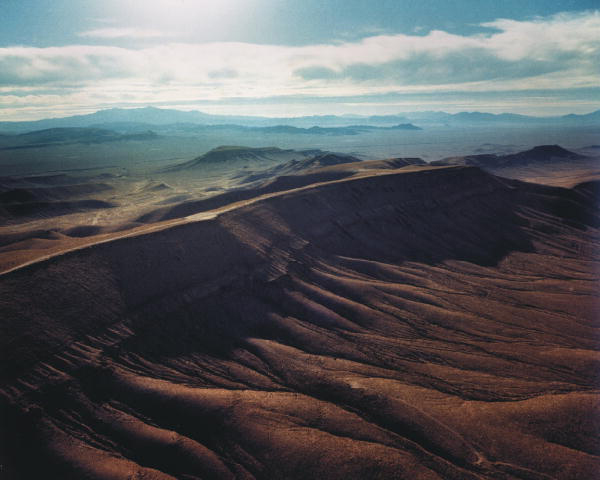

The Department of Energy (DOE) announced Nov. 22 that it would not meet its December deadline to file its licensing application for the Yucca Mountain nuclear waste repository, citing a need to review pertinent materials concerning the Nevada site. This delay, combined with ongoing funding challenges, means that DOE likely will not meet its 2010 deadline to open up the nuclear waste storage site.
The project is currently waiting for certification by the Nuclear
Regulatory Commission's (NRC) Licensing Support Network, a public database
that is supposed to contain all documents and reports related to Yucca, says
Allen Benson, spokesperson for DOE. The December deadline "was a self-imposed
target date," Benson says. "It'll take a couple of months to recertify
[the materials]." In August, NRC declined certification to DOE after the
state of Nevada challenged the process, saying that the supporting information
provided by DOE was incomplete.
In the meantime, DOE is planning to review the 5,800-page licensing application to determine if changes need to be made. Once DOE has certification, the documents must be online for at least six months before they can submit the license application, says Bob Latta of NRC. "If the application is acceptable, then we'll docket it," Latta says, "But they have not told us when the new deadline will be."
The state of Nevada, however, does not believe that the application will ever
be acceptable. "The NRC said DOE can submit their application, but it would
be at their own risk," says Tom Sargent, public information officer for
the Nevada Attorney General.
The "risk" is in submitting the licensing application without an Environmental Protection Agency (EPA) standard that defines the guaranteed length of time that radioactive waste can be safely stored, which Sargent says, "would give [the state] grounds to sue again," because it would be in violation of the Nuclear Waste Policy Act. "And Nevada would sue," he says.
In July, the Supreme Court ruled that EPA's 10,000-year safety standard was not suitable for the proposed nuclear waste repository, a significant win for Nevada, which, along with interest groups, is opposed to the project (see Geotimes, October 2004).The Nuclear Energy Institute planned to appeal the Supreme Court decision, but announced Monday, Nov. 29, that they would not seek review of the radiation protection standard, removing the last challenge to the ruling.
As a containment facility,
Yucca Mountain, 90 miles northwest of Las Vegas, Nev., can hold 77,000 metric
tons of radioactive waste, which will be brought to the area from 39 states.
Currently the Department of Energy is reviewing its licensing application to
be submitted to the Nuclear Regulatory Commission. Photo courtesy of DOE.
By law, the radioactive waste storage standard should be 300,000 years. The Yucca Mountain region, composed of a porous, welded tuff that sits upon a large aquifer draining to the south, has 33 earthquake faults and four "young" volcanoes, says Bob Loux, executive director of the Nevada Nuclear Waste Project Office, a division of the Nevada Governor's Office. Some people, including Loux, say that these geologic aspects undermine the stability of the mountain and the proposed containment facility, and thus, EPA will not be able to provide the 300,000-year standard. But DOE and other supporters of the project disagree, saying that the actual construction of the containment facility will support the standard, and researchers are currently developing methods to make the storage casks more resistant to corrosion (see Geotimes, March & October 2002 for more on Yucca geology).
Yucca Mountain is a remote area approximately 90 miles northwest of Las Vegas, located on the federally owned Nevada Test Site in Nye County. Originally selected almost 20 years ago, the site received approval in March 2002 by President Bush. The partially constructed containment facility is meant to hold 77,000 metric tons of radioactive waste and spent fuel in tunnels 1,000 feet underground.
Even if EPA can provide the 300,000-year standard, opponents of the project say that transportation of nuclear materials is inherently risky. "This is not a not-in-my-backyard argument," Sargent says. "We don't want this stuff to be moved."
DOE is facing another obstacle with funding the project (see Geotimes,
August 2004). Although DOE asked for more than $800 million in funding for
the Yucca project, Congress only appropriated $570 million — not enough
to get the facility up and running on time.
Laura Stafford
Links:
Department
of Energy - Office of Civilian Radioactive Waste Management
Nuclear
Regulatory Commission
Environmental
Protection Agency - Yucca Mountain Standards
State
of Nevada Attorney General's Office - Agency for Nuclear Projects
"Energy
Issues Take Center Stage in Senate Races," Geotimes, October
2004
"A
loophole threatens Yucca Mountain," Geotimes, August 2004
"Slim chance
of volcanic disaster equals notable risk," Geotimes, October
2002
"In
Search of Water: An Update on Yucca Mountain Studies," Geotimes,
March 2002
"After the
cleanup: Isolating Waste for the Long-Term," Geotimes, March
2002
 |
Geotimes Home | AGI Home | Information Services | Geoscience Education | Public Policy | Programs | Publications | Careers |